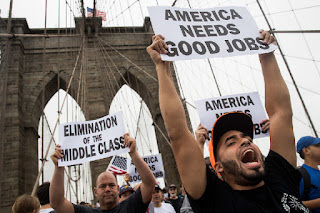The Paradox of the American Labor Movement
Last year marked a significant period for the American labor movement, characterized by prominent strikes and an increasing public backing for unions. However, despite these advancements, union enrollment remains low, particularly within the private sector. This discrepancy illustrates the paradox within the American labor movement, where the perceived influence of established unions contrasts sharply with the obstacles confronting new organizing endeavors.
Current State of the American Labor Movement: Despite a historically buoyant labor market and a surge in public approval, merely 10 percent of American workers are union members, with a mere 6 percent hailing from the private sector. Employees at major corporations like Amazon, Starbucks, and Trader Joe’s grapple with obtaining contracts or engaging in substantive negotiations. This disparity underscores the disparity between the advantages associated with union membership and the limited accessibility of these benefits for many workers.
Historical Context of the American Labor Movement: The decline in union membership is not a recent occurrence but rather a consequence of longstanding legal and policy changes aimed at impeding the formation of new unions. While unions established in the 1930s flourished, fresh organizing endeavors encountered formidable barriers. This trend is evident in the persistent decline in the overall proportion of the workforce in unions, despite a consistent number of unionized workers.
Impact of the Wagner Act on the American Labor Movement: The enactment of the Wagner Act in 1935 marked a pivotal moment for the American labor movement, granting workers the right to unionize and engage in collective actions. This led to a significant surge in union membership, peaking at 34 percent of the workforce by 1945. However, the subsequent Taft-Hartley Act of 1947 eroded key provisions of the Wagner Act, laying the groundwork for the challenges faced by contemporary organizing efforts.
Challenges Confronting New Organizing Endeavors in the American Labor Movement: The legal and policy changes following the Wagner Act have rendered it increasingly arduous for new unions to form. Consequently, despite public support and conducive conditions for organized labor, many workers need help in unionizing their workplaces. The current juncture, while promising, necessitates a reversal of these trends to genuinely reinvigorate the American labor movement.
The American labor movement grapples with a paradox: while established unions prosper, new organizing endeavors encounter hurdles. The decline in union membership is not attributable to waning interest or support but rather to enduring legal and policy impediments. To fortify the American labor movement effectively, these barriers must be addressed to cultivate a more conducive environment for workers aspiring to unionize.



Comments
Post a Comment